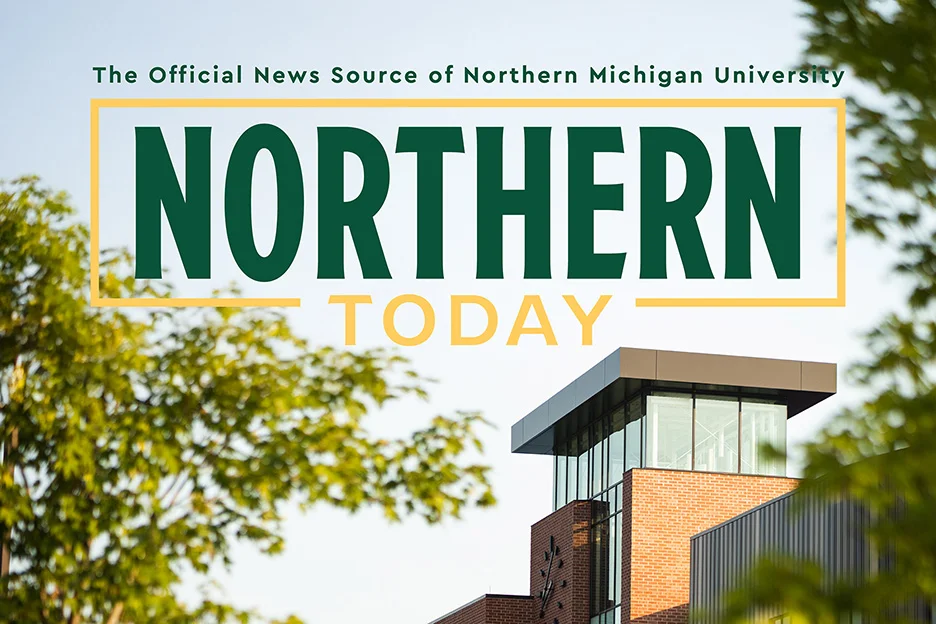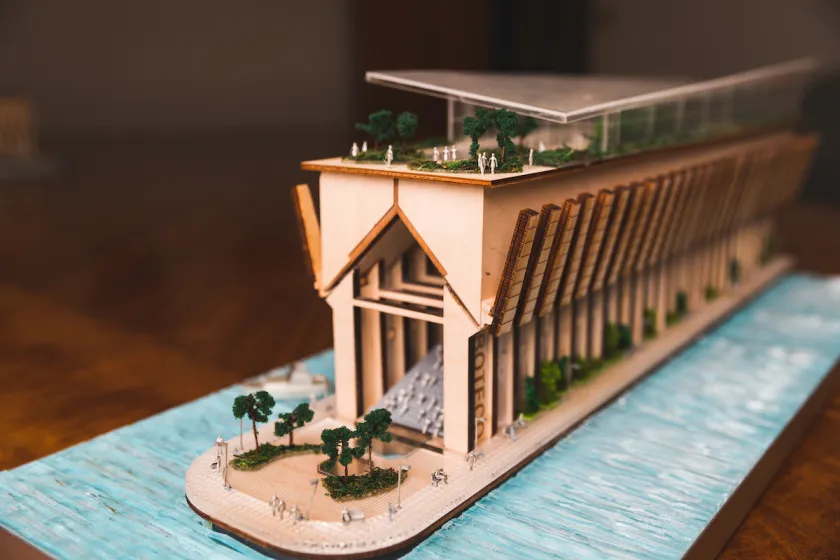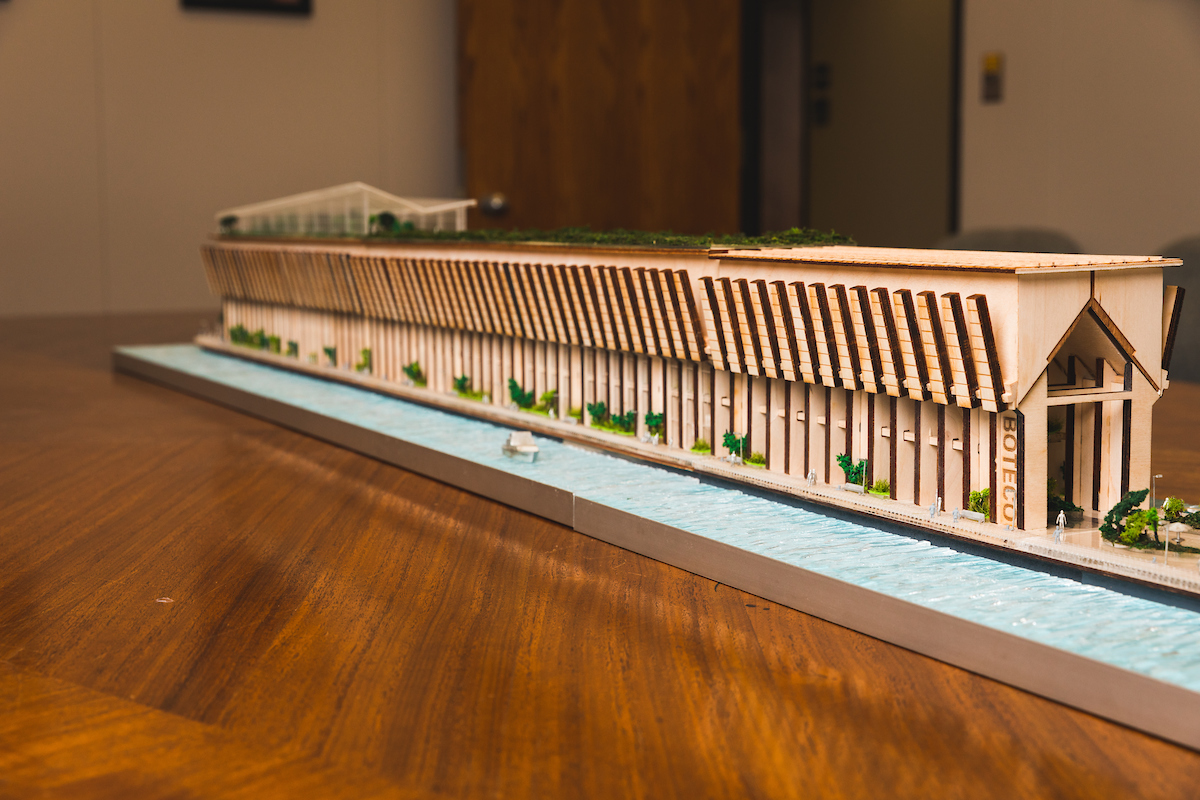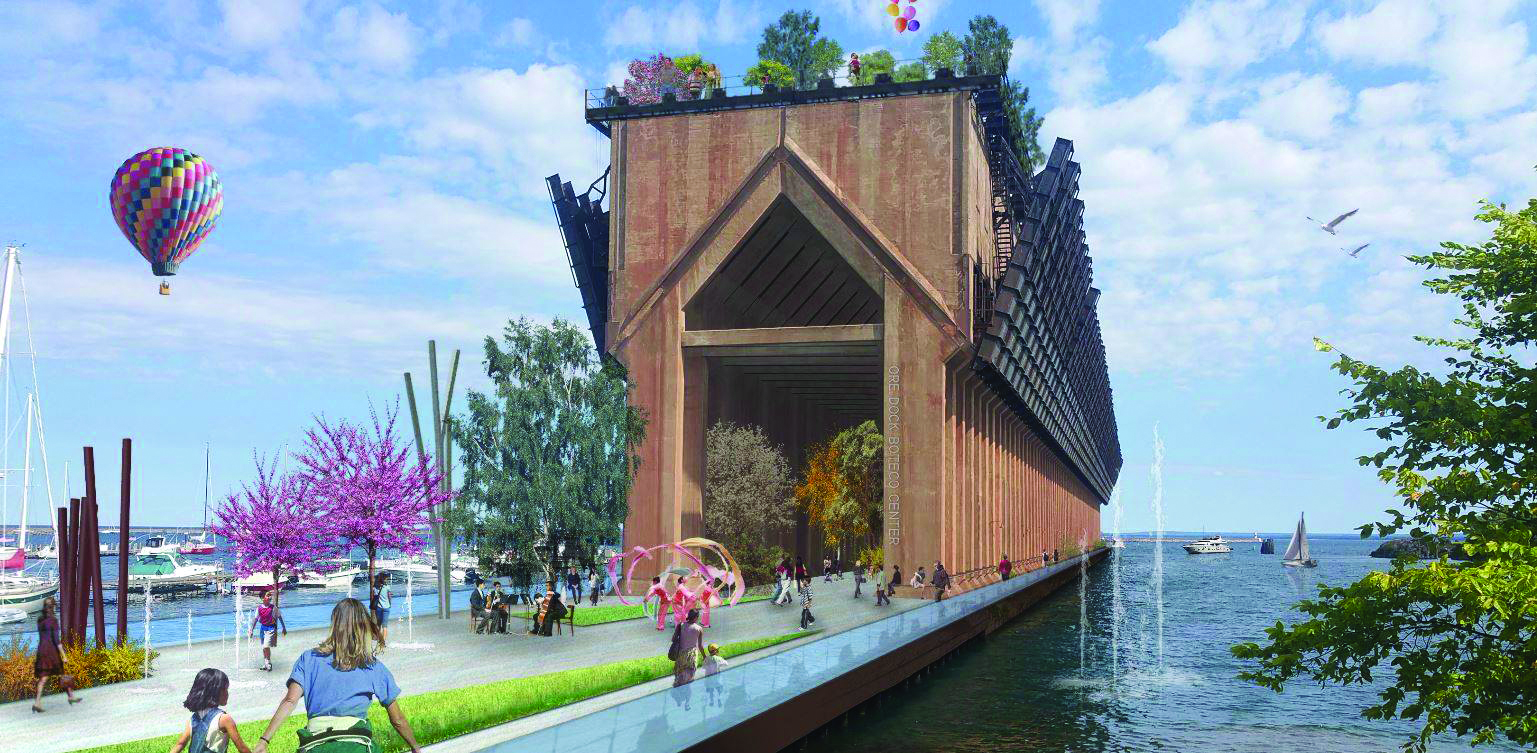Students and faculty from three academic disciplines are collaborating on behalf of a Marquette organization's endeavor to repurpose the deactivated Lower Harbor Ore Dock as a botanical and ecological center. The project was one of two selected for internal support in 2019 through the Northern PRIME Fund. Final outcomes will include a small-scale physical model, business plan and economic impact analysis that will help Ore Dock BotEco Center inform and inspire potential donors.
BotEco's overall goal is to transform the industrial structure into a public space that achieves a sustainable balance of education, commercial and recreational uses. Northern students and faculty have a unique opportunity to be involved in this vision by creating accurate, detailed tools that will be critical to fundraising efforts.
The physical model will be on display during an upcoming reception at Travel Marquette (details TBD). Created by art and design majors under the guidance of Professor Peter Pless, it represents the three phases of the BotEco proposal. The first will create a connector from shore to the dock, a promenade along the outer edge and performance space at the far end. The second phase will enclose portions of the promenade and possibly provide access to the top of the structure. The final stage includes a year-round greenhouse and seasonal gardens.
“Having the ability to collaborate with a professional architect on a design that will utilize a historic structure and impact the community in a positive way has been a valuable learning experience,” Pless said. “Two students hired through the grant found construction drawings in an archive library from the ‘30s. That's where the dimensions originated for the CAD [computer-aided design] models. They used a CNC router, laser cutter and 3D printers to manufacture individual scale components. They also took lots of photos around and in the dock to ensure accuracy and determined which materials to use so the model could be transported and displayed.”
Gisele Duehring, an NMU staff member who is president of the BotEco board, said a 3D presentation tool is more effective than slides or photos in relaying the goals of the project.
“It's so clear in the minds of those of us involved, but sometimes it's a struggle to bring other people along so they can clearly understand what's envisioned,' she said. “To see the three phases with the model will be very helpful in getting people on board so hopefully they can chat it up with others. They'll be able to see that the BotEco Center will maintain the cultural history of the ore dock without significantly altering its appearance.”
The business plan drafted by Professor Michael Crum and students will analyze and describe BotEco's development and long-term operations.
“No one wants to hand over money unless they have a pretty clear idea of what it will be used for,” Crum said. “We interviewed downtown business owners to get their feedback, most of which was positive. We're also trying to make financial projections by estimating the sources of revenue and costs on a quarterly basis over the first 10 years. The sources of revenue are pretty straightforward—rental fees for events and presumably a charge for entering the botanical gardens—but the estimation of how much they'll generate is difficult. We looked at comparable facilities to figure out visitor traffic, such as Milwaukee's [Mitchell Park] Domes. But that's a noticeably larger population area. A business plan forces you to think ahead about how you want the dock to look and operate, even if things change from what you originally drafted.”
The economic impact analysis is closely connected to the business plan, said Professor Hugo Eyzaguirre. It involves identifying stakeholders and understanding costs and resources to develop a quantitative analysis of BotEco's potential impact on the local economy.
“The construction of the facility has an economic impact with the labor and materials required,” Eyzaguirre said. “The second part is the economic benefit of having a new venue in place in Marquette. There's no other botanical garden in the area at the moment. For the local community, the impact is more indirect. For tourists, we are using Travel Marquette survey statistics on how much they typically spend here and how long they stay to try estimating how this new venue will impact that. People may need an extra afternoon or day in the area to visit the BotEco Center, which would require more meals and potentially a hotel.”
For more details on the Ore Dock BotEco Center project, along with architectural renderings of what it will look like upon completion, visit oredockboteco.org.
Northern's Progressive Research and Innovative Mutual Exploration (PRIME) Fund addresses challenges related to current funding trends by offering greater seed money for proposed projects with potentially impactful outcomes and high likelihood of success in external competitions. It also creates extensive opportunities for networking and cross-disciplinary collaboration that can facilitate tackling of substantive concepts.
This story also appears in the latest NMU Research and Discoveries magazine.



